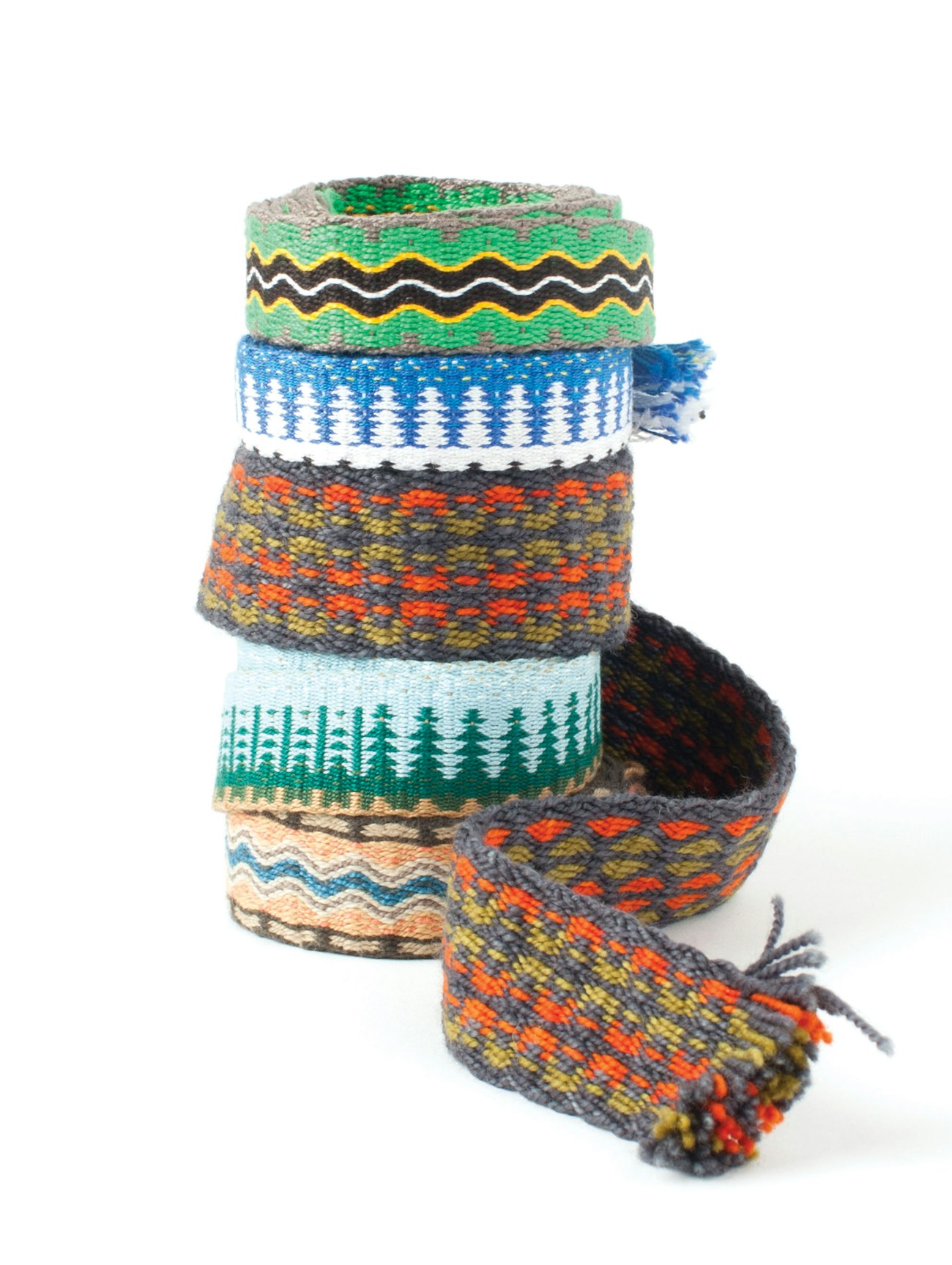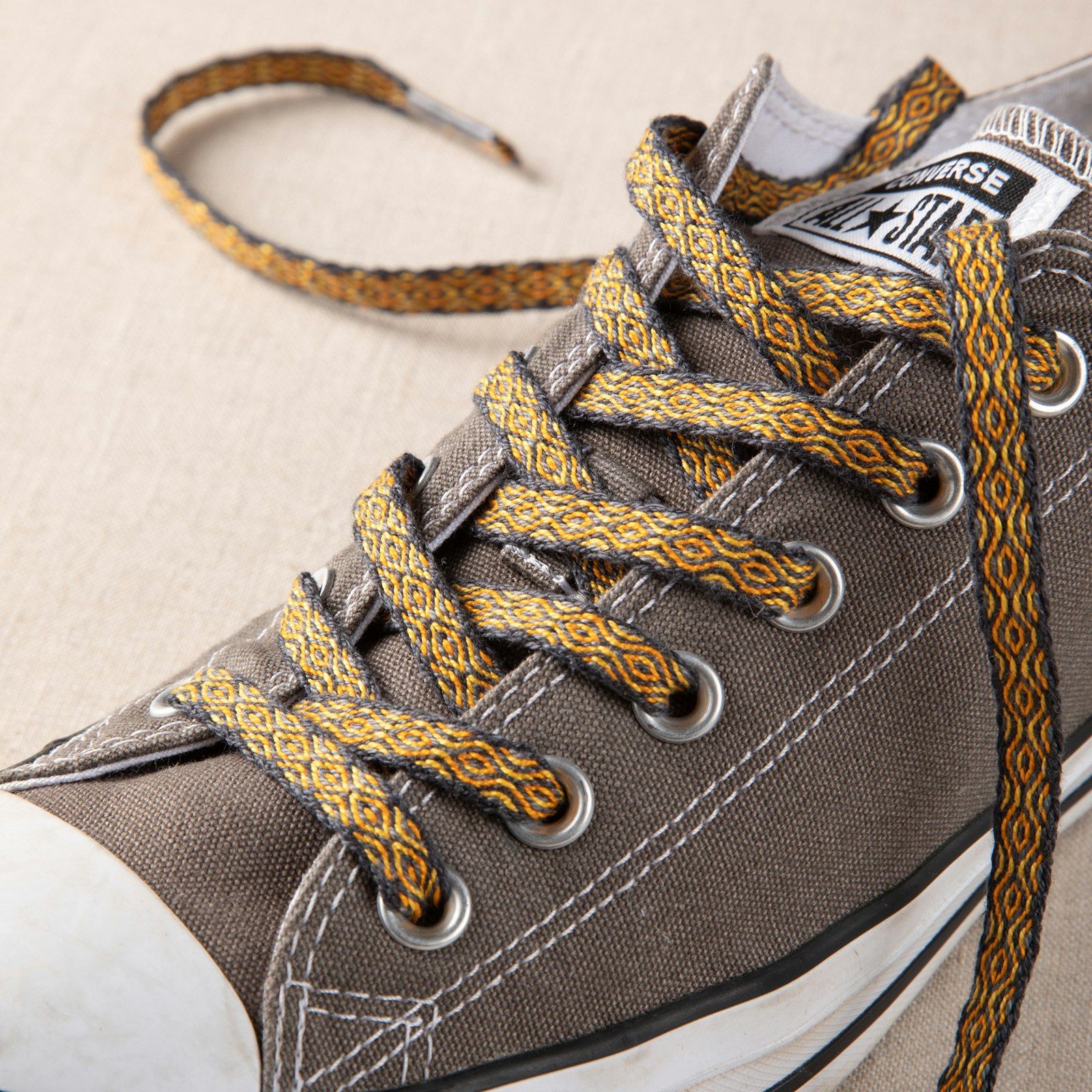John Mullarkey is one of the most sought after tablet teachers in the country and there's good reason! Not only is he an incredibly talented weaver and designer, he's also patient, kind, and uproariously funny. If you want to take a class from him in person, he's also teaching at the 2026 Weave Together with Handwoven event this March. You can find out more information about the event (including John's classes) here. —Christina
Every fall, a former guild mate who had been absent for months used to return to our meetings and delight everyone with dozens of bands she had woven during her summer living on a sailboat on a northern lake. She would apologize that this was all she had been able to weave because tablet weaving was the only thing she could manage on the boat.
The bands were beautiful and magical and sold like hotcakes at the annual guild sale. Having never really understood tablet weaving, I couldn’t imagine how what looked to me like square playing cards with holes in each corner could produce such intricately patterned bands. The idea of weaving on a sailboat all summer was appealing, although in my dreams the floor loom and my bench fit perfectly and somehow stayed in one place and perfectly horizontal as we rocked gently in the calm water. Obviously I haven’t had much experience sailing either.
Wherever I vacation next, John Mullarkey might just have convinced me to pack a set of weaving tablets, also called cards, some yarn, a laptop, and probably an inkle loom. His video workshop, Tablet Weaving Made Easy, was surprisingly enlightening, even for this committed floor loom weaver.
I used to have weaving tablets, and still might, if I didn’t throw them away in a rare fit of studio cleaning. They probably came in a box of other weaving tools or yarn I bought from another weaver. The only time I ever used them was as supplementary warp holders with S-hooks and weights hanging from the holes. (I can see John cringing.) I had watched people card weave, but couldn’t imagine how simply turning these tablets forward and backward would create woven patterns. Didn’t the warp get all twisted and tangled?
Then I saw John card weaving on an inkle loom in the first scene. Aha! Already I felt more comfortable. I know how to weave striped bands and pick-up patterns on an inkle loom. However, where I would normally attach heddles, John had inserted a stack of tablets with four warp ends threaded through each one. You could even card weave on a floor loom, if you wanted, he said, which means rigid-heddle looms are game, too.
 Just a small selection of bands woven by John Mullarkey. Photo from Tablet Weaving Made Easy.
Just a small selection of bands woven by John Mullarkey. Photo from Tablet Weaving Made Easy.
As I watched John’s demonstration of warping and weaving with tablets, it hit me. Tablet weaving is a little like loom-controlled complex patterning for inkle bands. I equated it to adding shafts to an inkle or floor loom or rigid heddles to a rigid-heddle loom. As my weaving philosophy has long been, “The more shafts, the better,” this gave me a new appreciation for card or tablet weaving, especially when he showed tablets with six and eight holes per card.
But I was getting ahead of myself. First I had to learn how to deal with four holes in both pattern drafting and warping, the difference between tablets threaded in the S direction vs. the Z direcrtion, and how to keep everything lined up and turning back and forth without the twisted mess I had envisioned. John clearly and carefully led the way one step at a time.
My favorite part was when he demonstrated checking the warp for errors. Of course he had intentionally made all possible errors when the video camera paused for him to finish warping. He showed how to find and fix them all without rethreading the whole loom. I would definitely mark that chapter for review before I start weaving.
The weaving process was a lot like inkle weaving, except with more sheds. Instead of raising the unheddled ends above and below the heddled ones as you would with an inkle loom, he simply turned the deck of tablets according to the draft. Then he showed how to freestyle patterns by changing the number of revolutions forward and backward, by moving threaded tablets into new positions in the deck or by changing the home position of the letters that mark each hole. He wove a tube, wove a two-layer band, wove in a slit for a buttonhole. He even wove a simple striped inkle band in the center with unwoven warps above and below.
And these, he pointed out, were only some of the many variations possible for a threaded-in pattern, which is the subject of this video. Threaded-in patterns, he explained, are those where the pattern is achieved only by the way the cards are threaded. All cards are turned together, either forward or backward.
Another class of patterns can be designed and woven that result from altering the turning sequence for particular cards according to a mapping diagram. Ooooo. I’m intrigued.
That's the way to do it, John. Always leave them wanting more . . . or another workshop video.


